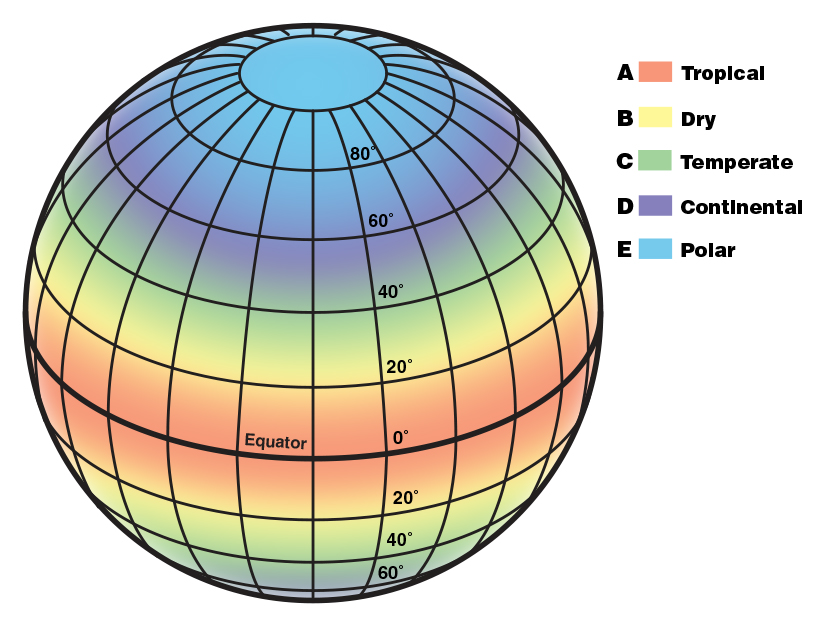Climates Around the World
Practice Questions
3rd Grade Science › Climates Around the World
The graph below shows the average temperature in Tampa, Florida, by decade since the 1940s. Which prediction about the temperatures in the 2020s is supported by the data?

What conclusion can be made about the average temperature in Tampa, Florida, since the 1940s based on the graph provided?

What conclusion can be made about the average temperature in Tampa, Florida, since the 1940s based on the graph provided?

The National Oceanic and Atmospheric Administration describes the five main types of climates. They are:
A: Tropical. In this hot and humid zone, the average temperatures are higher than 64°F (18°C) year-round, and there are more than 59 inches of precipitation each year.
B: Dry. These climate zones are so dry because moisture is rapidly evaporated from the air, and there is very little precipitation.
C: Temperate. In this zone, there are typically warm and humid summers with thunderstorms and mild winters.
D. Continental. These regions have warm to cool summers and very cold winters. In the winter, this zone can experience snowstorms, strong winds, and very cold temperatures—sometimes falling below -22°F (-30°C)!
E: Polar. In the polar climate zones, it’s extremely cold. Even in summer, the temperatures here never go higher than 50°F (10°C)!


Which climate zone is NOT found in the United States?
Which answer choice is the best description of the climate in a tropical zone based on the graphs provided?


The graph below shows the average temperature in Tampa, Florida, by decade since the 1940s. Which prediction about the temperatures in the 2020s is supported by the data?

Which answer choice is the best description of the climate in a tropical zone based on the graphs provided?


The National Oceanic and Atmospheric Administration describes the five main types of climates. They are:
A: Tropical. In this hot and humid zone, the average temperatures are higher than 64°F (18°C) year-round, and there are more than 59 inches of precipitation each year.
B: Dry. These climate zones are so dry because moisture is rapidly evaporated from the air, and there is very little precipitation.
C: Temperate. In this zone, there are typically warm and humid summers with thunderstorms and mild winters.
D. Continental. These regions have warm to cool summers and very cold winters. In the winter, this zone can experience snowstorms, strong winds, and very cold temperatures—sometimes falling below -22°F (-30°C)!
E: Polar. In the polar climate zones, it’s extremely cold. Even in summer, the temperatures here never go higher than 50°F (10°C)!


Which climate zone is NOT found in the United States?
What does the term climate mean? Example: Due to the climate in the Northeast United States, residents can expect snow in January.
The National Oceanic and Atmospheric Administration describes the five main types of climates. They are:
A: Tropical. In this hot and humid zone, the average temperatures are higher than 64°F (18°C) year-round, and there are more than 59 inches of precipitation each year.
B: Dry. These climate zones are so dry because moisture is rapidly evaporated from the air, and there is very little precipitation.
C: Temperate. In this zone, there are typically warm and humid summers with thunderstorms and mild winters.
D. Continental. These regions have warm to cool summers and very cold winters. In the winter, this zone can experience snowstorms, strong winds, and very cold temperatures—sometimes falling below -22°F (-30°C)!
E: Polar. In the polar climate zones, it’s extremely cold. Even in summer, the temperatures here never go higher than 50°F (10°C)!

How would the climate of MOST of Africa be described?
Source: https://scijinks.gov/climate-zones/ & http://www.webquest.hawaii.edu/kahihi/sciencedictionary/C/climatezone.php